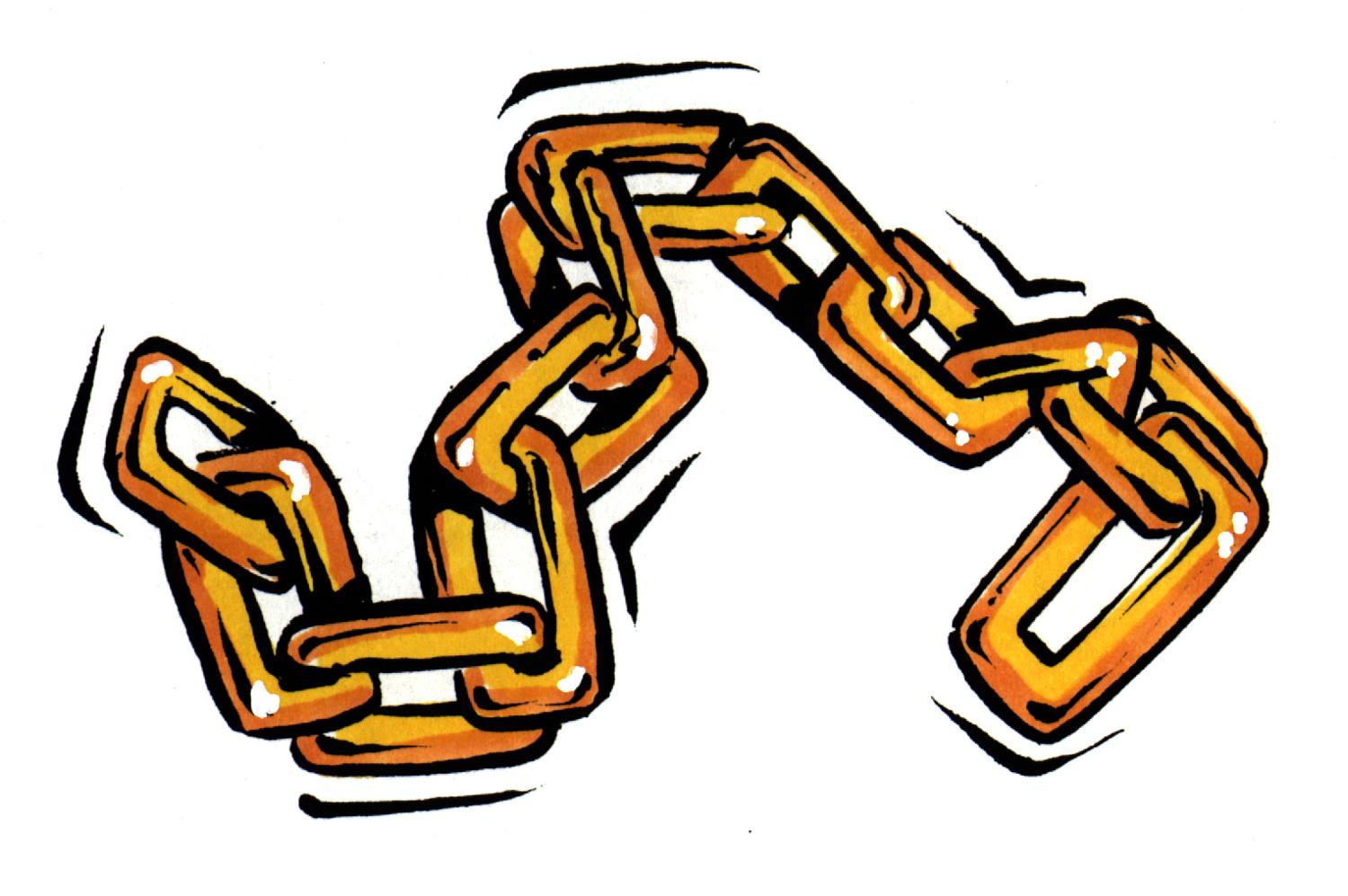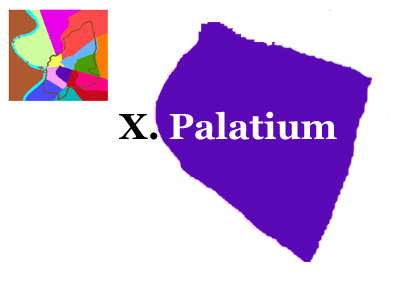
|

|

|

|

|

|
|
Images
|
Interactive
Bots
|
Maps
|
Ancient Latin
Texts
|
Modern Latin
Textbooks
|
Links
|
| Clivus
Palatinus |
 |
Directions: Rome, RegX
(to Clivus Palatinus); Shortcut @go Clivus
Palatinus
Resources: Clickable plan
of Palatine hill
Uses: Navigation aid in
VRoma
| Area Palatina
(including Domus Flavia, Domus Augustana, Domus Tiberiana)
|
   |
Directions: Rome, RegX
(to Clivus Palatinus), up (to Area Palatina);Shortcut
@go Area Palatina
Resources:
- 11 Rooms: Area Palatina; Domus
Flavia (Aula Regia, Basilica, Lararium, Peristyle, Triclinium); Domus Augustana
(Hippodromus); Domus Tiberiana (Cryptoporticus)
- Images and Links:
reconstruction drawings of the whole area and the various buildings and the
following resources specific to each palace:
- Domus Flavia: bust and statue
of Domitian; coin with equestrian statue of Domitian; relief of Roma and Senate
welcoming Domitian; photos of remains of octagonal maze in peristyle and oval
fountain outside triclinium; photo of lararium painting from Pompeii; English
excerpt from Suetonius about Domitian's enforcement of the law; Latin and
English excerpt from Suetonius about the omen of the crow just before the
assassination; Latin and English excerpt from Statius (Silvae 4.2.
10-11; 18-22) praising triclinium and comparing Domitian to Jupiter;
information about construction of the palace; links to De Imperatoribus
Romanis biography of Domitian and information about his
assassination
- Domus Augustana: image of
galleries overlooking Circus Maximus (plastico); photo of remains of
Hippodromus; Latin and English text of lead pipe inscription giving name Domus
Augustana; image of another lead pipe inscription; links to aerial view of the
site and reconstruction drawing of Hippodromus
- Domus Tiberiana: information
about who built the palace complex; photo of cryptoporticus; information about
assassination of Caligula with Latin and English excerpt from Suetonius; link
to images and historical background about Caligula; link to images of and
information about Tiberius's villa on Capri
- Objects: three poems of
Martial about the Domus Flavia (7.56; 8.36; 12.15) in Latin with hyperlinked
glossary, notes, and translation—the first two flattering poems were
written soon after the dedication of the palace, and the third critical poem
was written after Domitian's death
Uses: As with other parts
of the Palatine, this is an excellent locus for exploration and discussion of
the magificence of imperial display and the emotions it evoked among the
Romans. Some suggestions specific to the Area Palatina follow:
- Sample Treasure-Hunt
Questions: What two emperors were assassinated on the Palatine? Where and
when did the assassinations take place? Compare these two emperors; do you see
any common factors that may have contributed to their fates? What evidence can
you find of excessive flattery for Domitian? To what god is he compared? What
evidence can you find for criticism or dislike of Domitian? Explain why the
three palace complexes had different names. Which part of the palaces struck
you as the most amazing (from a positive or a negative point of view) and
why?
- Analysis of Texts: Ask
students to compare the three poems of Martial that can be found at the Domus
Flavia facade. How are the first two similar? How does the fhird turn the
themes of the first two upside down? How are all the poems dependent on the
circumstances surrounding Martial at the time of their composition? Do you see
any elements of subtle protest in the first two poems or are they merely
exercises in flattery? Conversely, do you see any real admiration for the Domus
Flavia in any of the poems? Latin students at or above the intermediate level
can be asked to translate the poems and answer these questions by pointing to
specifics in the Latin text. More advanced students could be asked to compare
the first two Martial poems with Propertius's poem about the temple of Palatine
Apollo (located in Area Apollinis Palatini) to see whether they can detect any
similarities or differences of tone and theme.
Directions: Rome, RegX
(to Clivus Palatinus), up (to Area Palatina),right—rear (to Area Apollinis
Palatini);Shortcut @go Area
Apollinis
Resources:
- 8 Rooms: Area Apollinis
Palatini; Scalae Templi (Temple Pronaos, Cella); Porticus; Bibliotheca
Colonnade (Latin Library); Ramp to Domus Augusti
- Images, Links, and Objects:
the following resources are specific to each part:
- Area Apollinis Palatini:
reconstruction drawing; images of Augustus as pontifex maximus and a
relief of Apollo with lyre; Objects: poem of Propertius written about
dedication of the temple (2.31), Latin version and English version, both
hyperlinked to explanatory notes with information and images about Danaids,
Niobids, Gauls, Myron; bot named Gaius Maledictus, a fictional architecture
student from Britannia who takes a very cynical view of imperial display and
leaves protest notes on wax tablets scattered about the complex (he also has
been programmed with a considerable amount of dialogue)
- Temple: photos of the Temple
of Portunus in Rome and the Temple of Jupiter Capitolinus in Dougga, North
Africa; relief showing a temple with carved doors; coin depicting Actian
Apollo; Roman copy of statue of Apollo by Scopas; statue of Diana; sarcophagus
depicting Niobids; information about the structure of the temple; information
about the way Augustus linked himself with Apollo and Apollo with his victory
at Actium; Latin and English quotes from Vergil's Aeneid (8.704-706;
714-15; 720-23) supporting this identification and referring to this temple;
Latin and English excerpt from Horace's Carmen Saeculare (1-8) about
this temple; Objects: two wax tablets from Gaius Maledictus
- Porticus: photo of peristyle
and garden from Pompeii; information about the “Golden Poticus” of
the temple complex; discussion of significance of Danaids here and whether
Vergil might have this in mind when he put them on Pallas's sword belt, with
Latin and English text of Aeneid 10.497-98; 501-502; Object: wax
tablet from Gaius Maledictus
- Bibliotheca: photo of
Corinthian columns from the Temple of Hadrian incorporated into the Borsa;
photo of reconstructed library from Hadrian's Villa; photo of statue of
Augustus as Jupiter; links to Bibliotheca Augustana, the Latin Library, and
Perseus Latin Texts; Objects: Ovid, Tristia 3.1.59-82, Latin
version and English version, both hyperlinked to explanatory notes about the
places mentioned; bot named S. Julius Hyginus (descendant of Augustus's
librarian) with information about Ovid's exile and the poem; wax tablet from
Gaius Maledictus with Latin and English excerpt from Suetonius about Augustus's
penchant for virgins
- Ramp to Domus Augusti: image
of a Praetorian guard; image of bust of Augustus wearing corona civica
and of a doorway from Pompeii with relief of the corona civica;
Object: wax tablet from Gaius Maledictus with Latin and English excerpt
from Suetonius about a “dinner of the 12 Olympians” where Augustus
dressed as Apollo
Uses: As with other parts
of the Palatine, this is an excellent locus for exploration and discussion of
the magificence of imperial display and the emotions it evoked among the
Romans. Some suggestions specific to the Area Apollinis Palatini
follow:
- Sample Treasure-Hunt
Questions: See the relevant questions from Barbara McManus's treasure hunt
and Bill Magrath's treasure hunt in the
Course Materials
Repository. Why did Augustus choose to dedicate this showpiece of a temple
to the god Apollo? Find three examples of the ways that Augustus associated
himself with Apollo. Describe the appearance of representations of Apollo
connected to this temple. Describe three different objections that Gaius
Maledictus makes to the temple complex. Do you think that these would have made
sense to a Roman of the time? Why or why not?
- Analysis of Texts: Ask
students to discuss the Ovid poem from the perspective of the poet's situation.
What does the poem tell us about the libraries of Rome? Why was this library
such a great boon to Roman intellectuals, and why does Ovid envision his little
poem being turned away? Why is the Propertius poem so important for our
understanding of the appearance of the Temple of Apollo? What do the passages
from the Aeneid suggest about Vergil's reaction to Augustus? More
advanced students could be asked to compare the Propertius poem with the first
two Martial poems (located in the Domus Flavia facade) to see whether they can
detect any similarities or differences of tone and theme.
| Area Sacra (including
Temple of Magna Mater, Temple of Victory) |
Directions:
Shortcut::
Resources:
Uses:












